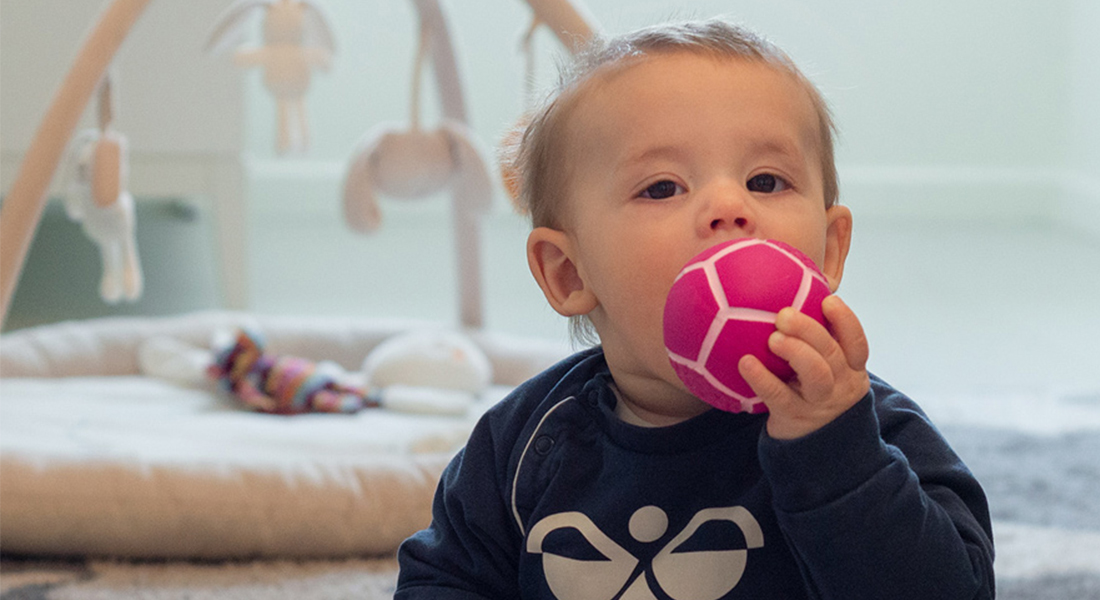Altercententric bias in 7.5 month-old infants: a pupillometry study

In this study, we tested the hypothesis that for young and relatively immobile infants, learning is mostly social. Because someone else is always in their sight, infants can use their capacity for following others’ attention to figure out what is worth learning about in their new environment. If this tendency, called an altercentric bias, is strong enough infants may not remember an event if no one else attended to it.
We set up two experiments in which infants watch an animated character (the agent) follow a ball inside or outside a scene. At some point the agent is covered and the ball changes location. Using pupil dilation, we probe where infants remember the ball: either where the character last attends to it, or where it actually is.
In one experiment our little participants saw the agent watching the ball being hidden in the centre of the screen, behind an opaque panel. After the agent is covered, the babies witnessed the ball rolling outside the scene. We compared this with a version of the animation where the agent saw all of the same events as the participants: thus the agent also watched the ball rolling outside. At the end of both, the opaque panel dropped down, revealing the empty space behind it. The data was consistent with our prediction that babies misremember the ball still hidden inside when the agent last saw it there: babies’ pupils were larger, indicating surprise, when the agent’s attention last cued the ball inside.

In the other experiment the ball always ended inside the stage. But when the opaque panel dropped, there was no ball there, animations ended with an impossible event. With the version where the agent last saw a different event, the ball exiting, we predicted that the infants would be less surprised by the magical event. Like before, a version where both saw the same events, served as a comparison. While this data is very new, it appears that this time infants' pupils reacted more when only they saw the ball hidden in the stage. This is the opposite of what we predicted.

Interestingly, in both experiments, infant’s pupils reacted more when the agent had seen a different event before the reveal, suggesting some sensitivity to the agent itself, more so than what the agent’s attention cues.
|
Velisar Manea |
 |
|
PhD, professor
victoria.southgate@psy.ku.dk
|
 |
 |
|
 |
About the study
Altercententric bias in 7.5 month-old infants: a pupillometry study began in June 2020 and was completed in July 2022.
The study was supported by the European Research Council (ERC).
Contact
Velisar Manea
PhD Student
Centre for Early Childhood Cognition
vem@psy.ku.dk
